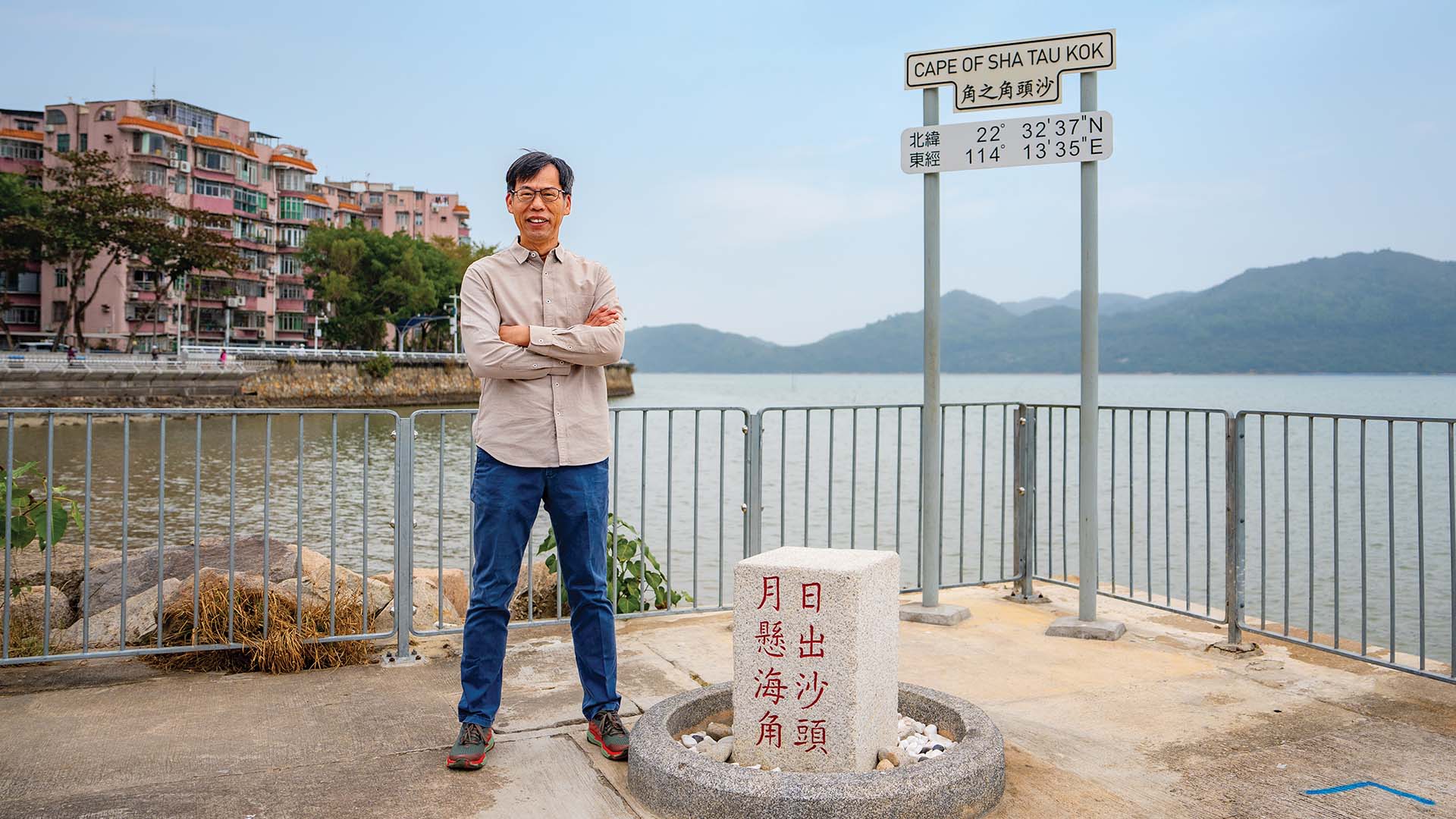
Located on Hong Kong’s northeastern border with Shenzhen, Sha Tau Kok used to be a mystery to many. With a population of just about 4,000, it has remained a restricted area for decades, where non-residents can visit only with a government permit. But since June 2022, the once-closed town has been gradually opening to visitors curious to unveil its secrets.
One of the many historic tenement houses lining San Lau Street is the Sha Tau Kok Story House, a heritage museum full of artefacts and records documenting the community’s storied past. “It used to be a bustling street. Mainland people from across the border would come here to buy goods that they couldn’t find back home,” says Charles Lee, director of Sha Tau Kok Story House and an eco-tour guide. Today, as Shenzhen has developed into a prosperous metropolis, Sha Tau Kok is no longer a destination for sourcing goods.
Back when he was still living in the city centre, Lee used to take tour groups to visit the Plover Cove Country Park, which forms part of the coastline around the sheltered harbour of Starling Inlet, or Sha Tau Kok Hoi. During one trip to Lai Chi Wo — a historic, revitalised Hakka settlement — Lee met Sha Tau Kok’s chief, who inspired him to visit and learn more about the border town and its cultural links with the villages in the area. “I decided to relocate to Sha Tau Kok as I really loved the environment and the pace of life there,” he recalls. “There is nothing else like it in the New Territories.”
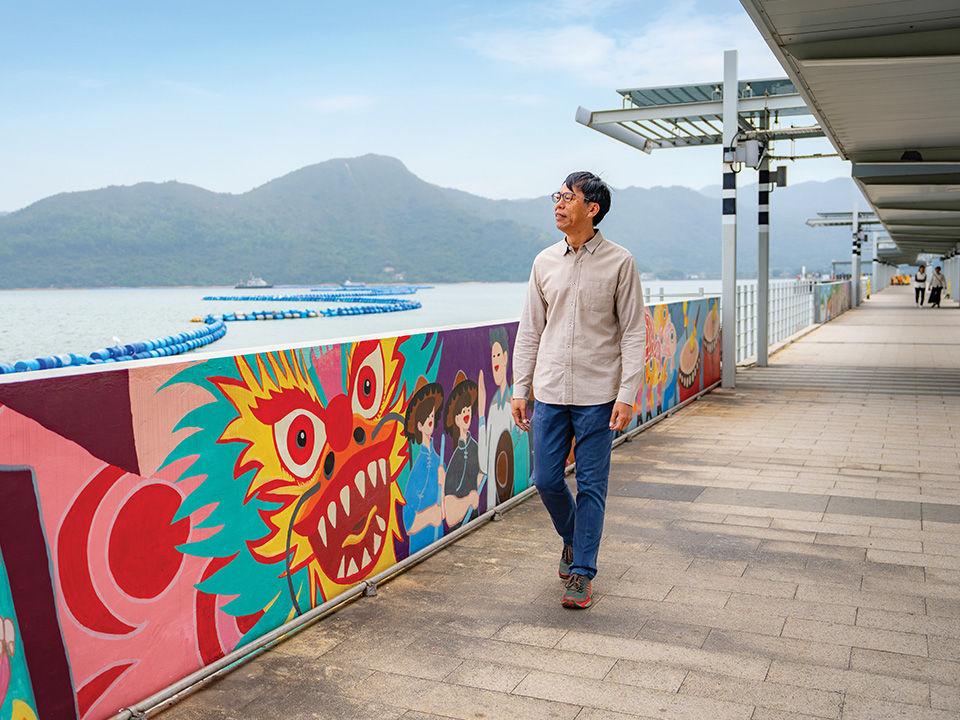
A town of natural and cultural treasures
And he has found life as a Sha Tau Kok resident much more enjoyable than he expected. He loves to stroll along the waterfront while enjoying the stunning scenery. “The 280-metre-long Sha Tau Kok Pier may already be well-known as the longest pier in Hong Kong,” he says. “But it’s only when you walk all the wabirdy out to the end that you realise how amazing the views are. Just look at the undulating ridges of Plover Cove Country Park on one side and the distant urban skyline of Shenzhen on the other.” Lee’s flat overlooks the harbour, with a view that he never gets tired of. “In the evenings, you can often see herons or other birds resting on the line of blue buoys floating near the pier.”
He’s also passionate about promoting Sha Tau Kok’s culture through social media and film clips of happenings in the town.
“The native residents are mostly Hakka people and Hoklo [descendants of migrants from Fujian], who were fishermen but have moved to live on land,” he says. “They still retain a lot of their traditions linked to the sea, though.” One example is the Dry Dragon Boat folk dance, which is performed during festivals and celebrations such as weddings. During the ritualistic dance, Hoklo residents don costumes they make themselves as they parade along the street while waving their arms in a paddling motion to the sound of drums.
“Sha Tau Kok never gets crowded on typical days, but you’ll see hundreds of people coming together at special occasions such as celebrations of the birthday of Tin Hau [Goddess of the Sea].”
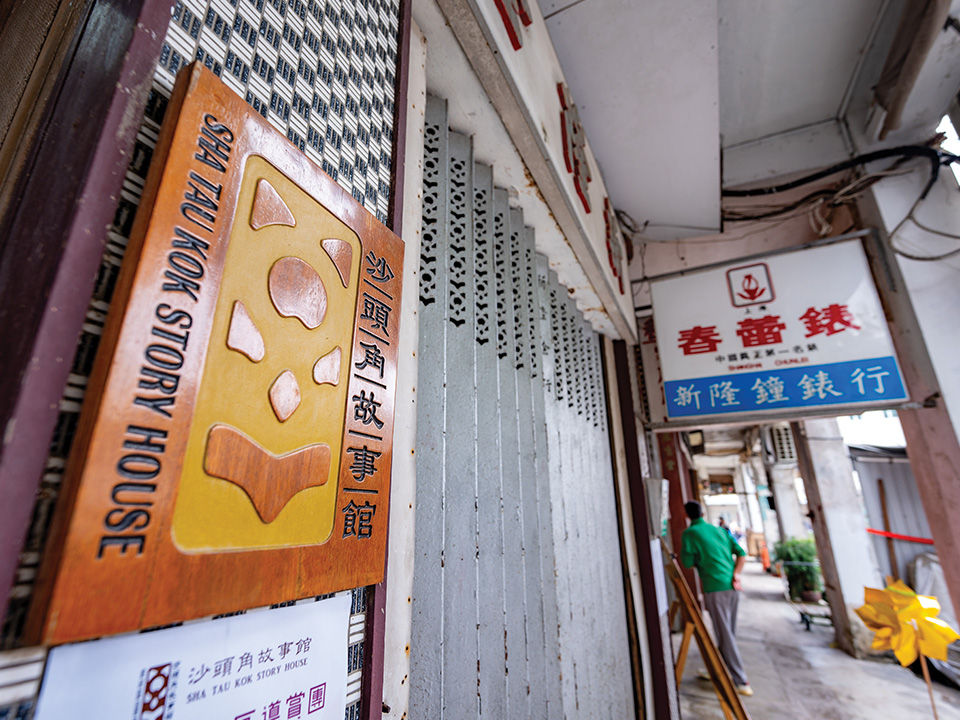
A story house
Lee opened the Sha Tau Kok Story House in 2018 to preserve the border town’s historic artefacts and stories of its residents. It’s housed in a traditional, one-storey 1,000-sq-ft terraced shophouse, which was built in 1933 and features an original street-level veranda — a typical characteristic of buildings from that era. The exhibits include donated items that show how people once lived in Sha Tau Kok, such as old books and pamphlets, original furniture, tools, crockery, bamboo hats, clothing, and even a traditional seashell window.
“Upmarket village houses would have windows made out of clusters of seashells that were ground down into thin translucent sheets,” he says. “If you look closely under the light, you can still see the patterns made from the shells.”
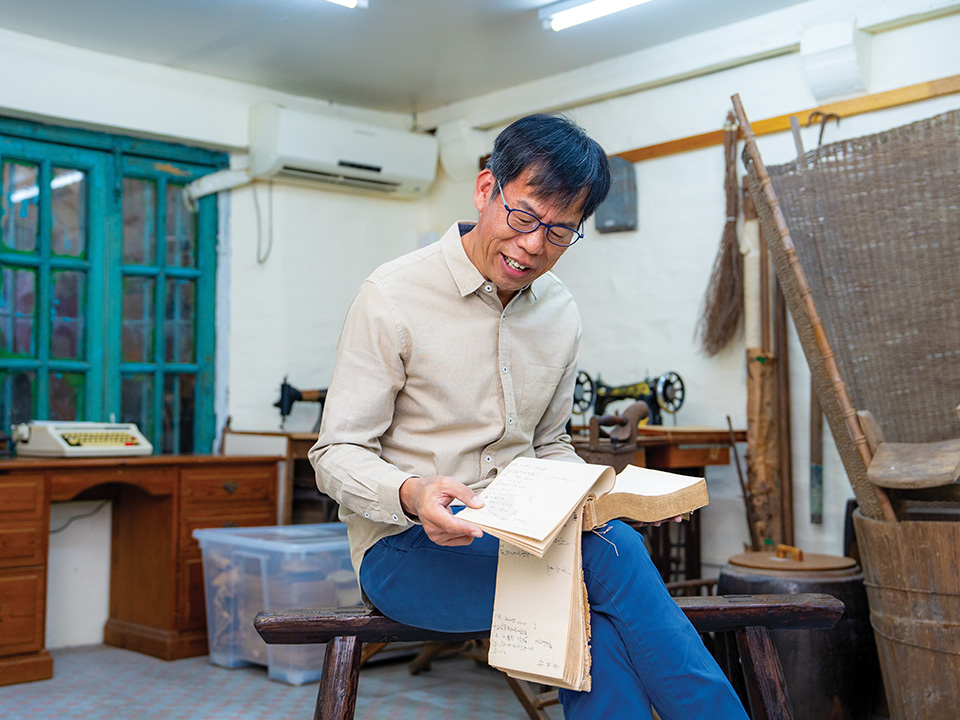
A living museum
Since the government announced plans to further open up Sha Tau Kok, Lee has started to reorganise the heritage museum’s exhibits in time to receive more visitors. The ambition is to expand the Story House to another storey of the building, and he has also formed an organisation to further develop the town’s conservation efforts.
“Some of the old shop owners’ descendants will come back and reopen those places as ‘story rooms’ to recount the history of their families’ businesses to visitors,” he says. “We are also encouraging young people to set up cafes and creative businesses to revitalise the district. Sha Tau Kok will make a great cultural destination.”
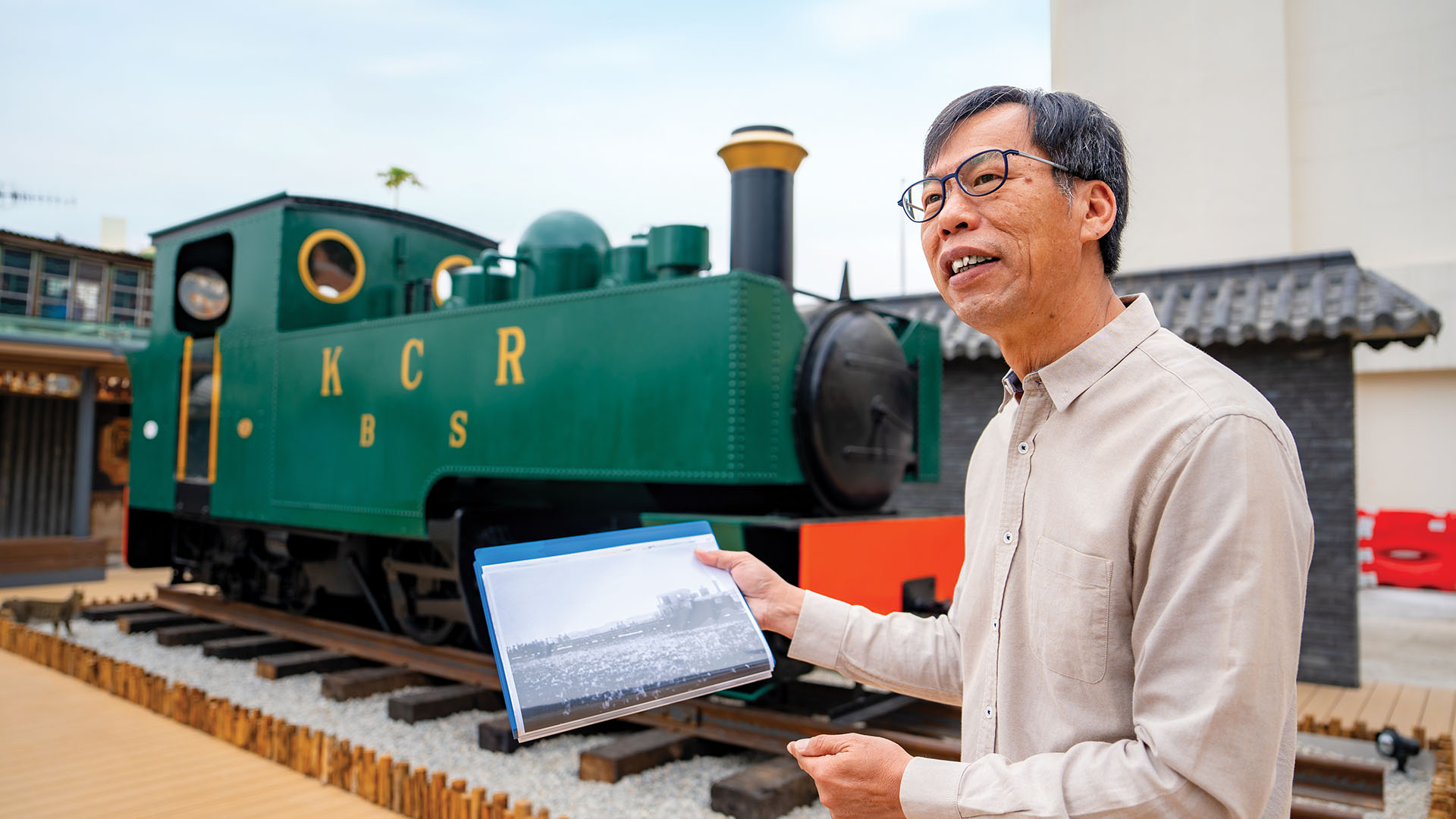
5 things to discover in Sha Tau Kok
- Find remnants of the disused tracks of the original Kowloon-Canton Railway branch line along Che Ping Street. The line was in service between Sha Tau Kok and Fanling from 1912 to 1928, before it closed due to competition from a newly opened road nearby.
- Sha Tau Kok still boasts five T-shaped street signs, which make great social media photos!
- Situated just next to the border, Hip Tin Temple served as a village school early last century, and is now a declared monument. It was rebuilt between 1894 and 1895 to replace an earlier temple building.
- The Sha Tau Kok Market is a great place to sample Hakka dishes, such as bitter gourd stuffed with minced pork and braised pork belly. Dried marine products are worth trying, too, as they are sourced by former fisherfolk who know where to find the best in the trade.
- Although Chung Ying Street — meaning Sino-British Street — between Hong Kong and Shenzhen is off-limits to Hong Kong visitors, you can get close to the demarcation line and take photos of one of the boundary stones.
Information in this article is subject to change without advance notice. Please contact the relevant product or service providers for enquiries.
The Hong Kong Tourism Board disclaims any liability as to the quality or fitness for purpose of third party products and services; and makes no representation or warranty as to the accuracy, adequacy or reliability of any information contained herein.



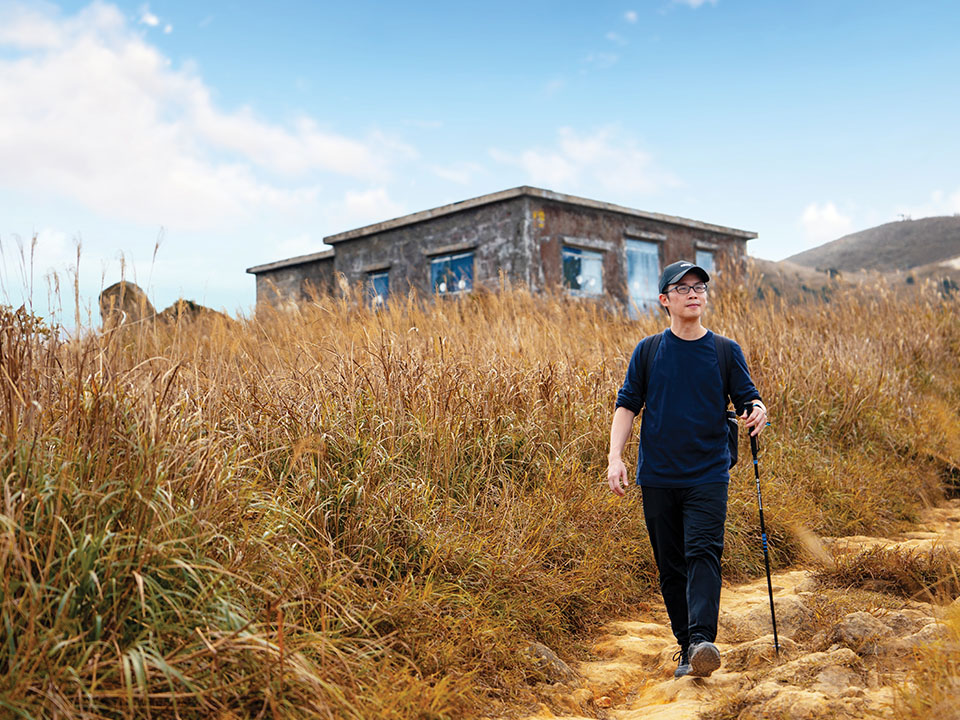
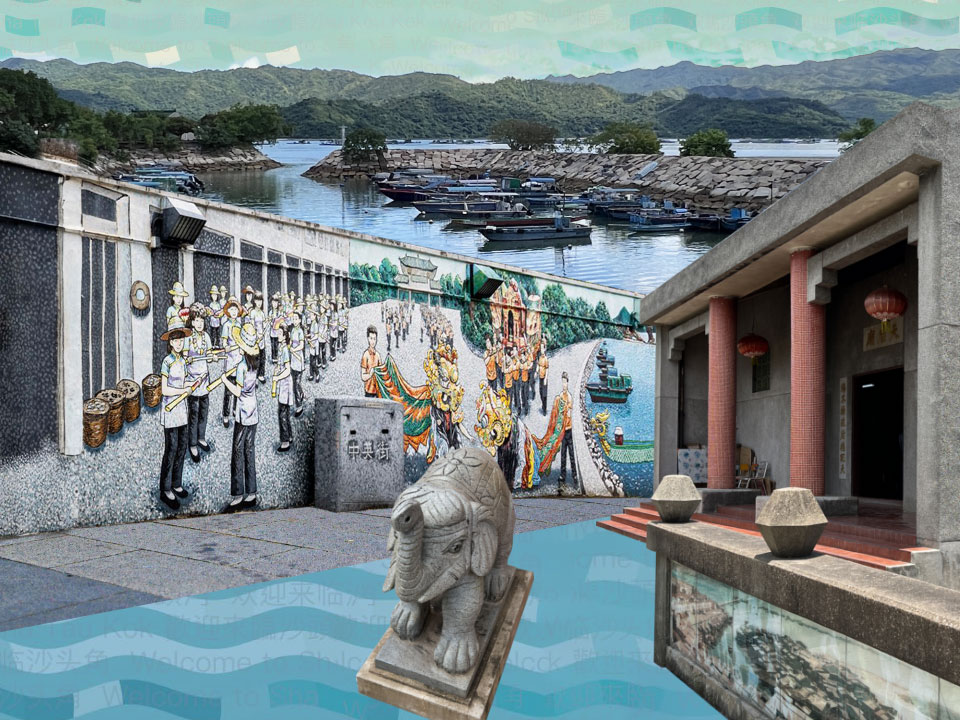
 Live Chat
Live Chat









